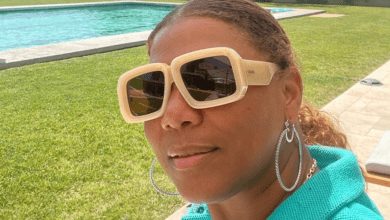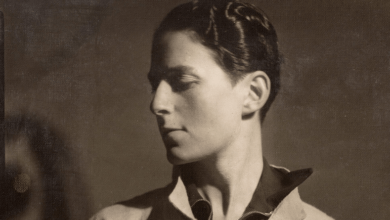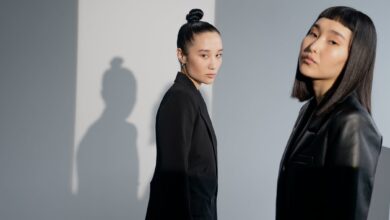The final week of August carries with it anticipatory feelings of what September inaugurates: a new school year and a new fashion season. While as a Leo I’ve an inherent love of August, September is the month that makes me giddy: desk copies of books I’m teaching this fall and September issues of the elite garden variety of fashion magazines (including “the” 916 page! September Issue) have amassed on my coffee table like holiday presents that magically appear under the X-Mas tree overnight.
As many of you know, I study and teach ethics (through literature), and my love of learning is philosophically complimented by my love of fashion. Indeed, if ethics is a set of stylized ways of living, then aesthetics – created through our clothes, shoes and various other accoutrements – is a significant part of those ethics. Fashion is the aesthetic manifestation and performance of one’s ethics; it is both symbolic of and formative to the way one lives.
Which is not to say I turn my nose at how fashion is consumed by the hoi polloi – by which I mean in my own round-about way that, of course, I watch Project Runway and, oh yes, my jaw hit the ground after watching Ven’s seething misogyny find its way out of his fat head and onto my TV screen this past week. (We were all waiting for it, no? I mean, he’s definitely carried an air of “sanctimonious asshat” about him this entire time, ammi right? See my friend and AE-comrade Jill’s recap of the episode.) One might naively claim that Ven’s cruel comments about his client Terri Herlihy (a size 10 even though Ven repeatedly asserted that she was a “size 14” and (incorrectly) “plus-sized”) was some kind of projection of his own fat-phobic (or fat-induced) self-loathing – but, like most men (yes, I said it), I don’t think Ven has that kind of cognitive register or level of self-awareness. I don’t think he’s capable of seeing the extent to which his hypocritically stupidity has taken hold of his being. For instance, was the comment “[m]y client really doesn’t have a shape-she doesn’t have any sense of style whatsoever” about Terri, or was it about himself?
In other words: cognitive dissonance, Ven, you have it.
Ven grossly lamented having to work with “real” women, which intimates that “real” women are “fat” and, second, that women who model are not “real” women-a sentiment that further serves the notion that models are really just wire hangers and not sentient living beings. Models have to function under the premise that they are not persons; they are not to take critiques of their figure, face, or look personally. They are to take nothing “personally.” They are treated as contractually-obligated animate objects, most of whom work freelance-and, for those of us in freelance, we know how well respected we are on the pay-scale. Because we all get paid on-time and adequately, right? As a freelance writer with a few freelance model friends, from my perspective it seems that models have the shit-end of the already shitty stick.
My point in talking about Ven’s comments and the depersonalization of the model in general is that both correlate with another emerging trend in the multi-billion fashion industry: the use of gender-bending male models to model and advertise female clothing.
This is not to say cis-gender men and bio-men cannot wear clothing designed for women (“women’s clothing”) or don pretty pink nail polish. Not at all. The concern, rather, is how the substitution of male models for female models enables and perpetuates a subtle yet pervasive misogyny in the fashion industry. Simply put: men, who are able to maintain a lower body weight than women, are able to model designer clothing better than women; men, beautiful androgynous men like Stav Strashko and Andrej Pejic (the latter is 6’1″ and wears a size 2) are capable of effortlessly mimicking the desired “clothes-hanger look” that designers want in order to show off their looks on the runway. Because clothes look their best on a hanger. I think the turn to androgynous models (who may or may not identify as trans; androgyny and trans-identity are different; indeed, trans identifying women on hormones gain weight and acquire curves, making them “real” women in the eyes of fashion) signifies the extent to which the fashion industry has always been by and for men and, more symbolically, it speaks to how misogyny operates in an industry perceived as being for women and attendant to the female consumer.
My mind, here, goes automatically to Gayle Rubin‘s groundbreaking “The Traffic in Women: Notes on the Political Economy of Sex,” which is about how economies, whether capitalist or not, are driven by “women traffic” in order to strengthen male ties and, on a macro scale, patriarchy. In the capitalist world of fashion, bio-women and cis-gender women models were this traffic between male designers and businessmen who purchased these pieces and designs – and, yes, the small but sizable percentage of women who would buy these pieces, too. (So, the Rubin paradigm isn’t entirely mappable.)
It’s interesting that Rubin, in her attempt to posit what the eradication of women’s oppression might look like, suggests that the supplanting of patriarchy with matriarchy simply won’t do; it’s just an inversion of a hierarchy. Instead, she imagines:
that the feminist movement must dream of even more than the elimination of the oppression of women. It must dream of the elimination of obligatory sexualities and sex roles. The dream I find most compelling is one of an androgynous and genderless (though not sexless) society, in which one’s sexual anatomy is irrelevant to who one is, what one does, and with whom one makes love. (in Deviations, p. 61)This is a grand sentiment, yes? Not to be judged by one’s sexual anatomy, or gender, because we would be living in a “genderless society.” But the materialist in me knows, as Rubin does, that this is a lofty “dream” indeed. And here I’m not speaking of semantics but of fleshy materiality. Of bodies. Gender, as the self-fashioned fabric of our biological sex, exists; this is not the problem. Gender differences should be celebrated; the moral hierarchization and oppression of minority genders (non cis-gender men genders) should not. The very real material nature of our being, which is expressed through our gender, however we play it, cannot be overlooked, especially when a significant part of this self-fashioning includes fashion – clothes, accessories, etc. – itself.
Androgynous male models disrupt this traffic of women on the runway, but the substitution of these male models as “real” women functions to further oppress “real” women-the ones with flesh and curves and boobs (trans or cis-gender). The ones who Ven does not want to dress. This is where my concern lay, with the increased abjection of the female body, the removal of it from the runway of culture, and the purging, dismantling, and destruction of it by women who learn to hate their bodies.





